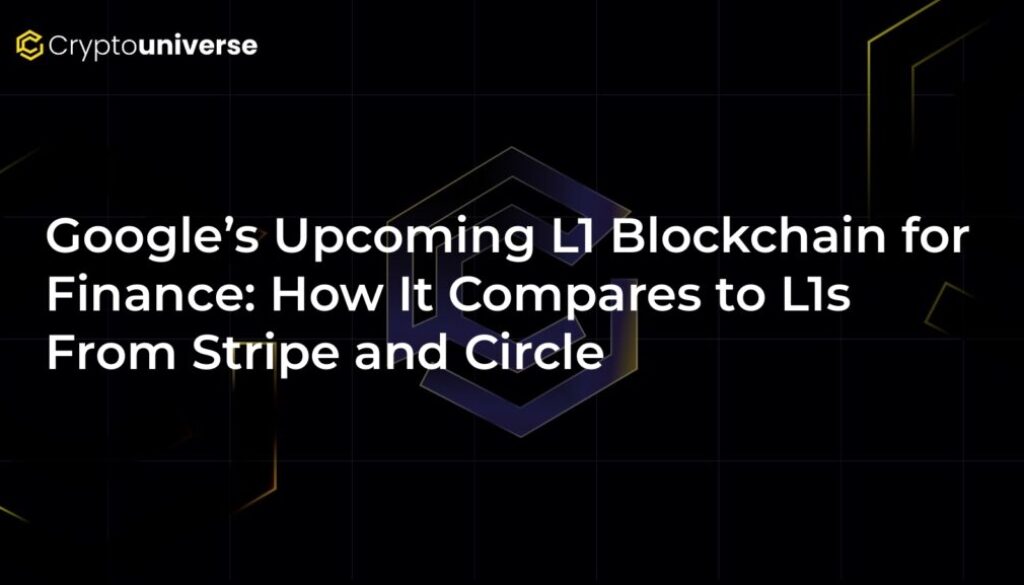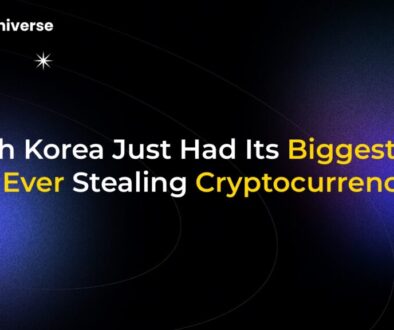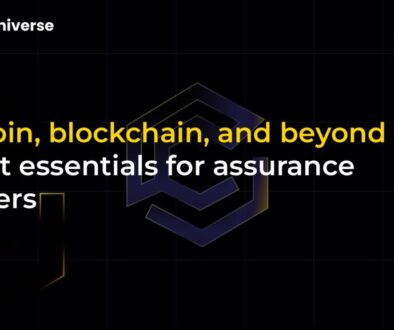Google’s Upcoming L1 Blockchain for Finance: How It Compares to L1s From Stripe and Circle

The New Financial Frontier: Tech Giants Enter the Layer-1 Arena
The battle for the future of finance is no longer just being fought on Wall Street or in the crypto-native world of decentralized finance (DeFi). A new front has opened, led by the biggest names in technology. Google, Stripe, and Circle are all stepping into the ring, not just with applications, but with their own foundational blockchains, known as Layer-1s (L1s). This signals a monumental shift towards institutional-grade infrastructure for digital assets.
At the center of this new race is Google Cloud’s ambitious project, the Universal Ledger (GCUL). This post dives deep into Google’s Upcoming L1 Blockchain for Finance: How It
What is Google’s Universal Ledger (GCUL)?
First revealed in more detail by Google’s Head of Web3 Strategy, Rich Widmann, the Google Cloud Universal Ledger (GCUL) is a purpose-built L1 blockchain designed for institutions. Unlike many existing blockchains that cater to retail users and decentralized applications, GCUL is engineered from the ground up to serve the rigorous demands of global finance.
Here are its defining characteristics:
- Credibly Neutral Infrastructure: Google is positioning GCUL not as a proprietary ecosystem, but as a neutral, shared utility. The idea is that any financial institution, from banks to payment processors, can build on it without worrying about strengthening a direct competitor.
- Python-Based Smart Contracts: In a strategic move to lower the barrier to entry, GCUL will support smart contracts written in Python. This makes it significantly more accessible to the vast pool of traditional developers and financial engineers who may not be familiar with crypto-native languages like Solidity.
- Institutional Focus: GCUL is tailored for wholesale payments, asset tokenization, and creating a 24/7 capital markets infrastructure. It’s a B2B play, not a B2C one.
- Major Partnership with CME Group: To underscore its institutional credibility, Google Cloud has partnered with CME Group, the world’s leading derivatives marketplace. CME has already completed initial testing, exploring GCUL for enhancing collateral, settlement, and fee payments.
The Race of the Titans: A Head-to-Head Comparison
While Google, Stripe, and Circle are all building L1s, their philosophies and go-to-market strategies couldn’t be more different. Each is leveraging its unique strengths to carve out a niche in the future of finance.
Google’s GCUL: The Neutral Public Utility
Google’s strategy is to be the foundational layer for everyone. By creating a neutral platform, they aim to attract a wide range of players who might be hesitant to build on a competitor’s chain. For example, a payment firm like Adyen would likely avoid Stripe’s L1, and a stablecoin issuer like Tether would be unlikely to adopt Circle’s. GCUL aims to be the “Switzerland” of institutional blockchains where all parties can operate.
- Core Strategy: Shared, neutral infrastructure for the entire financial industry.
- Key Differentiator: Python programmability and a focus on being an unbiased platform.
- Distribution Model: Leveraging the immense scale and enterprise relationships of Google Cloud.
Stripe’s Tempo: The Vertically Integrated Merchant Empire
Stripe is extending its existing payments empire into the blockchain world. Its L1, named Tempo, is designed to be a vertically integrated system that builds upon its massive network of merchants. This is less about creating an open ecosystem and more about enhancing its core payment services with the benefits of blockchain technology.
- Core Strategy: Extend existing payment rails and deepen its merchant ecosystem.
- Key Differentiator: Seamless integration for millions of businesses already using Stripe.
- Distribution Model: Tapping into its more than a trillion dollars in annual merchant payment flows.
Circle’s Arc: The Stablecoin-Centric Ecosystem
Circle, the issuer of the USDC stablecoin, is placing its flagship product at the heart of its L1, Arc. The entire system is optimized around USDC, which will act as the native token for transactions (gas). Arc is designed for lightning-fast settlement and seamless foreign exchange, leveraging USDC’s global liquidity.
- Core Strategy: Build a financial ecosystem with USDC at its core.
- Key Differentiator: Speed, built-in currency exchange, and the network effect of USDC.
- Distribution Model: Capitalizing on USDC’s global footprint and deep integrations across the crypto economy.
At a Glance: Google vs. Stripe vs. Circle
| Feature | Google (GCUL) | Stripe (Tempo) | Circle (Arc) |
|---|---|---|---|
| Core Strategy | Credibly neutral infrastructure | Vertically integrated merchant payments | USDC-centric financial ecosystem |
| Key Features | Python smart contracts, institutional tokenization | Seamless merchant integration | High-speed settlement, built-in FX, USDC as gas |
| Target Audience | Banks, institutions, exchanges, fintechs | Existing Stripe merchants and partners | USDC users, DeFi, global businesses |
| Timeline | Testing in 2024, launch in 2026 | Targeting launch in 2025 | Already in pilot phase |
Why Build a New L1? The Permissioned Advantage
A key question is why these giants are building their own L1s from scratch instead of creating Layer-2 solutions on established networks like Ethereum. The answer lies in control, compliance, and performance.
These new institutional L1s are more like private intranets than the public internet. By building a permissioned or semi-permissioned environment, companies like Google can offer benefits that are critical for mainstream financial institutions:
- Compliance and KYC: Onboarding can be restricted to known, verified participants, simplifying regulatory compliance.
- Privacy: Transactions can be kept private, a non-negotiable for most financial institutions.
- Predictable Costs: They can offer stable, SaaS-like pricing models, avoiding the volatile gas fees of public blockchains.
- Performance: The network can be optimized for specific use cases, like high-throughput payments, without being constrained by the needs of a general-purpose public chain.
The Road Ahead
The entry of Google, Stripe, and Circle into the L1 space is a powerful validation of blockchain technology’s potential to rewire global finance. While Circle’s Arc is already in its pilot phase and Stripe’s Tempo is eyeing a 2025 launch, Google’s GCUL is playing a longer game, with a full launch slated for 2026 after extensive testing with market participants this year.
The competition is no longer just about superior technology; it’s a clash of business models and distribution strategies. Google is betting on neutrality, Stripe on its merchant network, and Circle on its stablecoin dominance. Whichever approach wins, one thing is clear: the infrastructure for the next generation of finance is being built today, and the biggest names in tech are laying the foundation.


